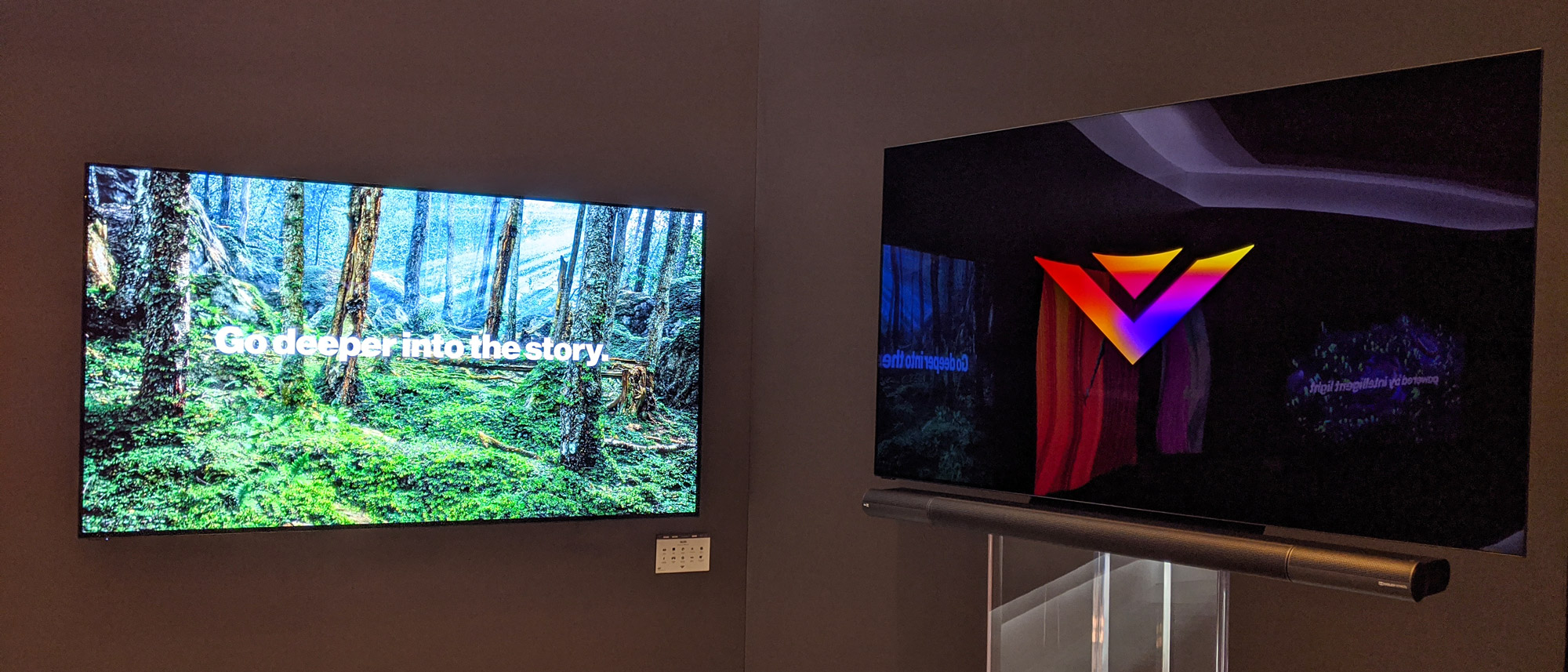Why you can trust Tom's Guide
Vizio is shaking things up with a new offering: The Vizio OLED TV. We're in Vegas for CES, and got an early look at the company's impressive new OLED model, the simply named Vizio 65-inch OLED. Announced the day before the press-conference-filled Media Day before the show starts, this may be one of the TVs we're talking most about during the show. One thing is absolutely clear; Vizio has definitely stepped up its game for 2020.
Vizio has been a strong presence in the value-priced and mid-range TV categories for some time, winning over customers with a combination of low prices, high-quality displays and a streamlined smart TV experience that leverages free content and a built-in Google Chromecast to offer full-featured support without the complexity or expense of other smart TVs. And in the last couple of years, the company has pushed forward on the quality front with quantum dot-enhanced displays that offer more vibrant color and brightness.
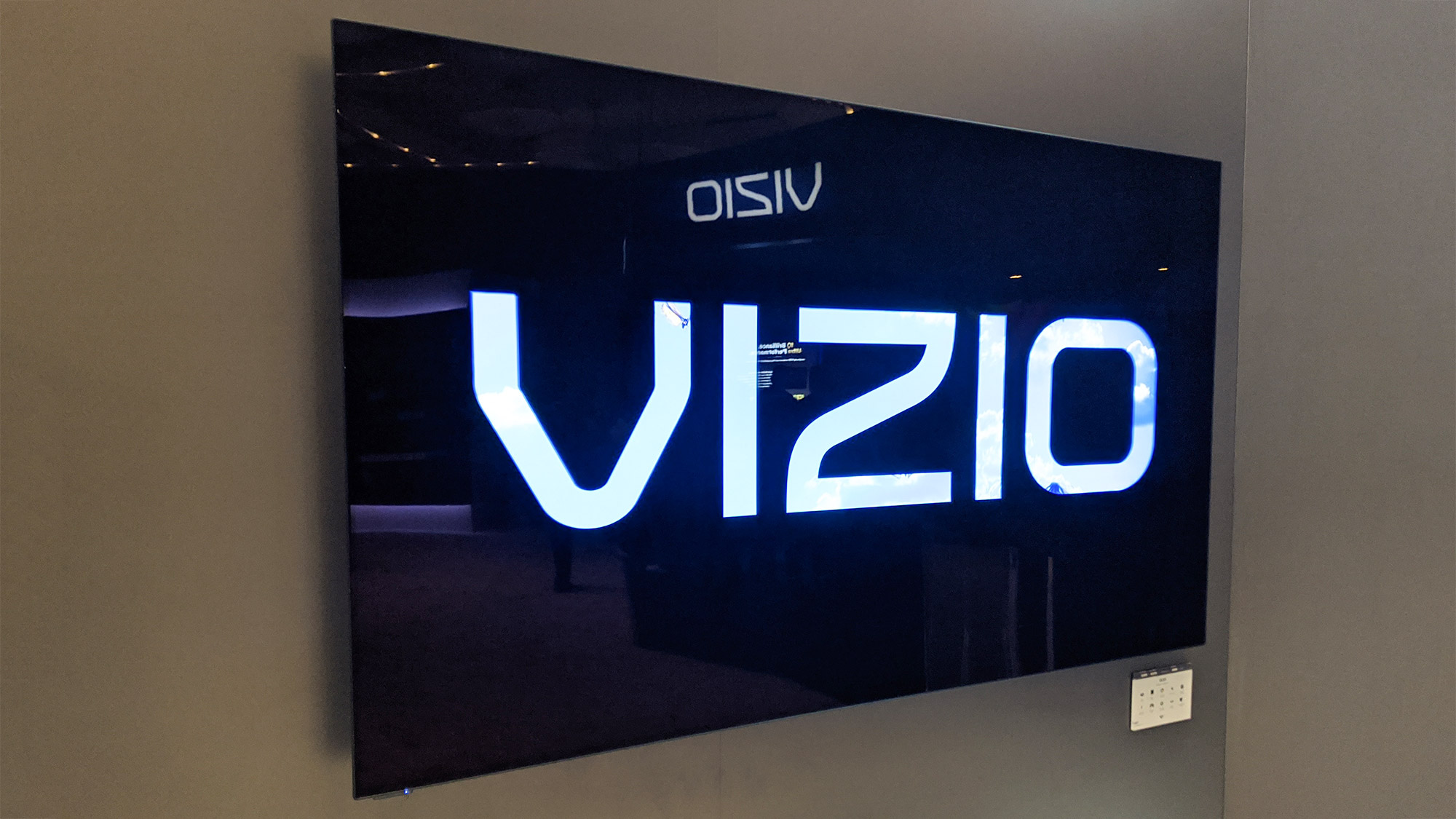
Pairing Vizio's SmartCast smart TV platform with an OLED panel from LG Display -- the manufacturer behind LG and Sony OLED TVs -- the Vizio OLED is the most impressive Vizio TV yet.
During my time with the new OLED set, I was impressed with the noticeable difference in contrast and black levels offered between the OLED and even the top-of-the-line P-Series Quantum X, which was set side-by-side with the new model. While the P-Series X delivered bright and vibrant colors, the Vizio OLED had deep black levels that lent a sharpness to the 4K picture that even the best LCD-based TVs struggle to match. It's one of the defining differentiators between OLED and everything else, and it's undoubtedly part of why Vizio has chosen to embrace the technology as part of its premium TV lineup.
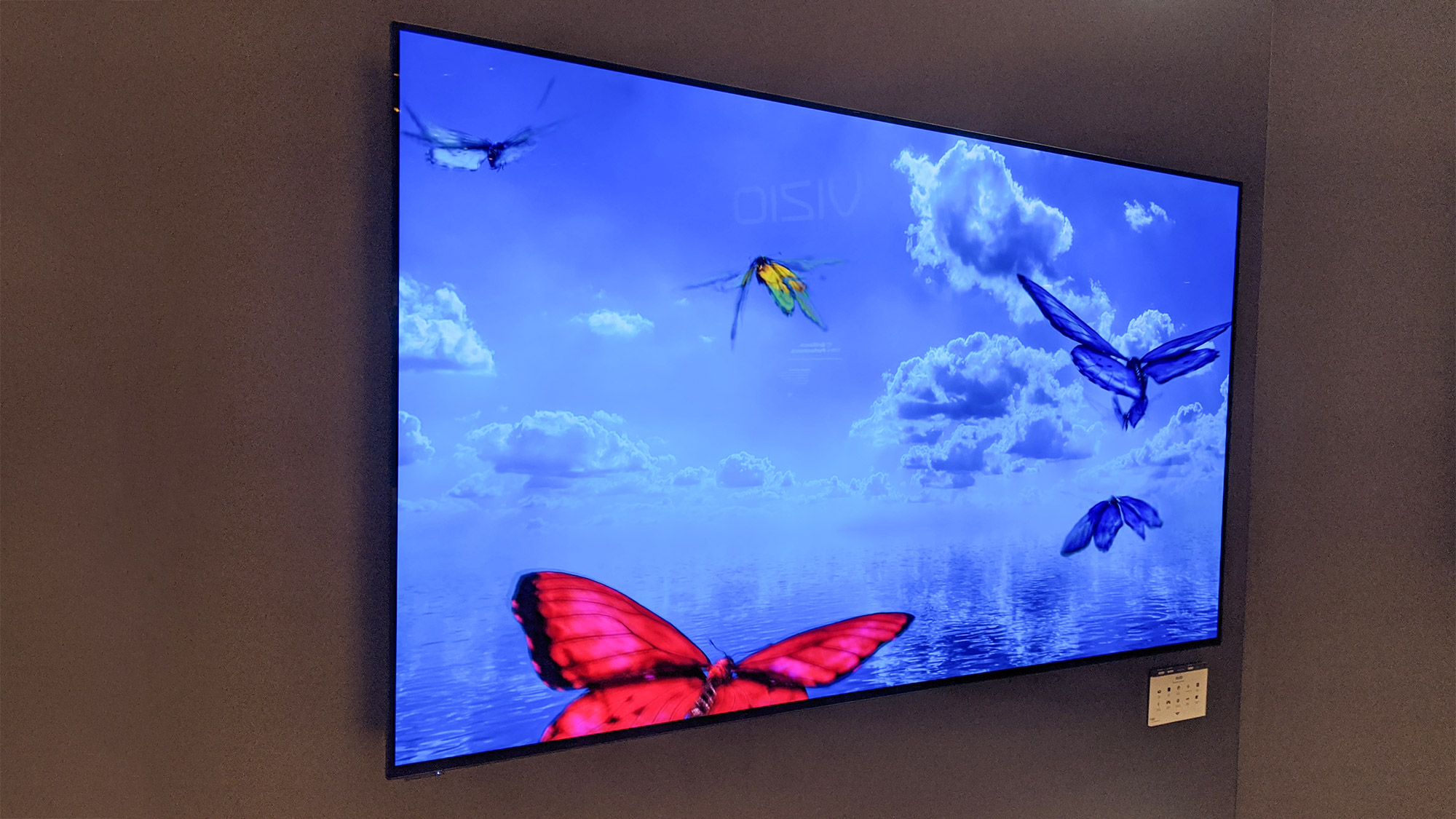
The OLED display is powered by Vizio's proprietary IQ Ultra processor, which provides the computing muscle for seamless content upscaling, HDR support and SmartCast 4.0 (the latest iteration of Vizio's smart TV platform). More importantly, the new processor provides support for 4K resolution at frame rates up to 120Hz, letting the OLED surpass the average 60Hz TVs with superior smoothness.
The OLED should boast impressive color and superb contrast, since OLED's per-pixel lighting allows for dramatically improved contrast and sharpness compared to backlit LCD displays. But Vizio also uses several video enhancements on the processing side, boosting the color and sharpness of the picture, and upscaling lower resolution content for the 4K display.
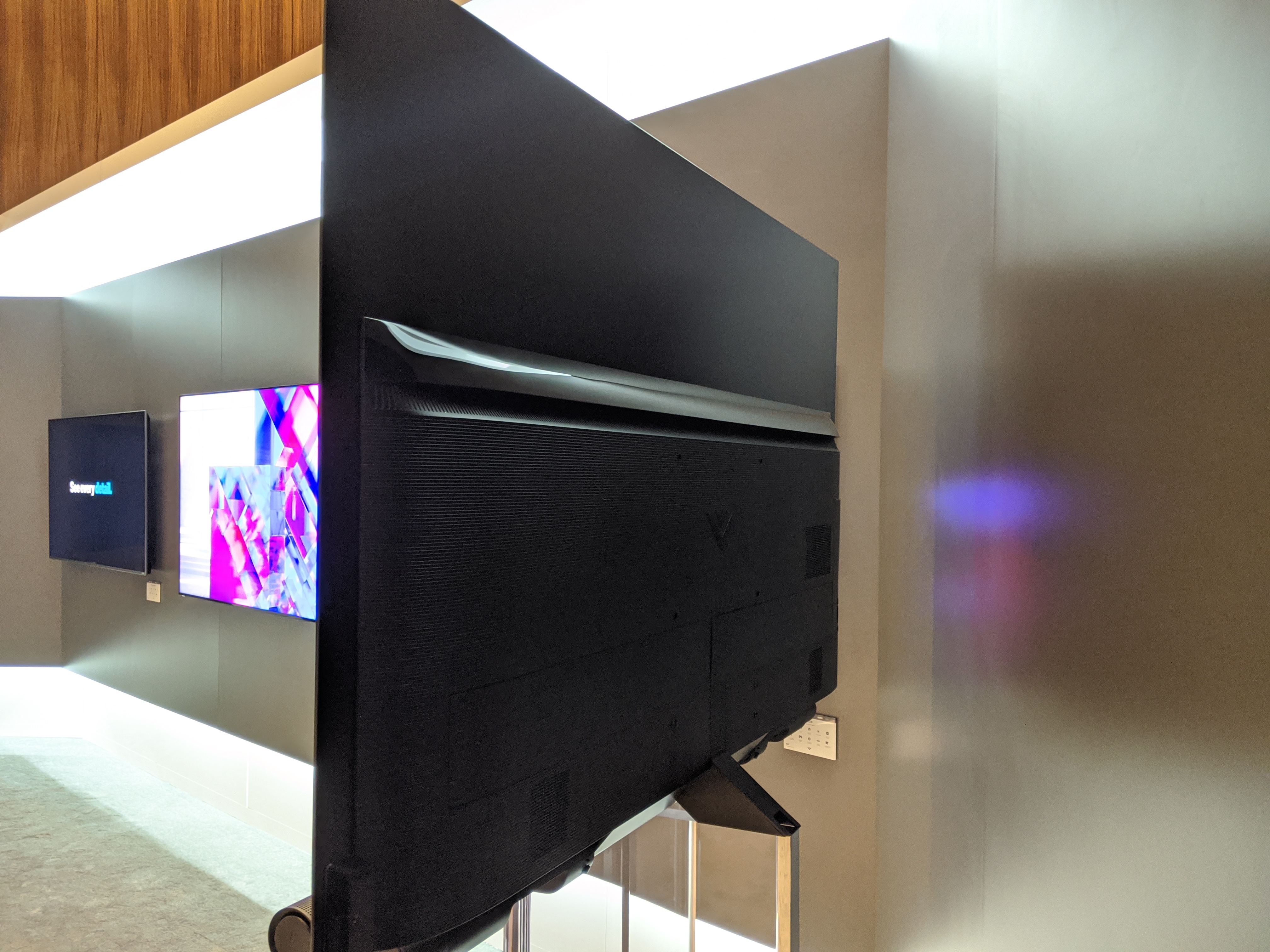
The new OLED model will also come with HDMI 2.1 support, with at least one HDMI 2.1 port offering support for 4K at 120Hz, better support for HDR content and uncompressed audio formats. It also provides for a handful of new gaming features -- which Vizio calls Pro Gaming Engine -- which includes variable frame rate support and auto game mode, which detects when a game console is connected and switches to low-latency game modes without having to fumble with the remote.
And speaking of the remote, Vizio's 2020 TVs will get a new remote control design. After a couple of years with a lackluster remote control, the new 2020 models will feature a more streamlined design, more in line with the smart TV controls offered on Samsung and Roku TVs, which center around navigation with a 4-way directional control, and less of an emphasis on numbered buttons. The remote also boasts Bluetooth connectivity, and a built-in microphone for voice search and other verbal interactions.
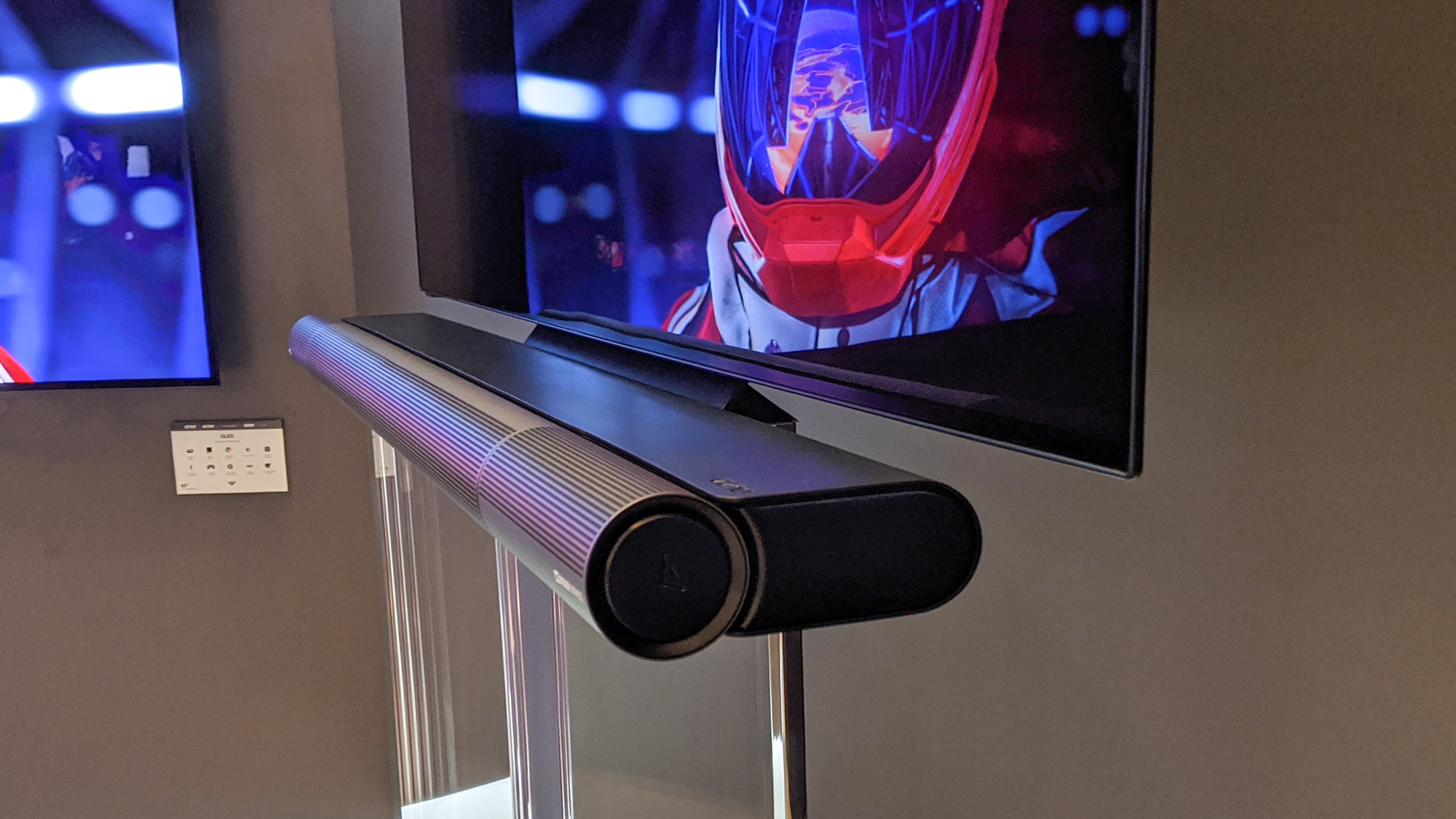
The OLED TV's stand is also designed to support Vizio's accessory soundbars, as well. The stand doubles as a mounting bracket, and lets you attach the soundbar to the TV even when wall mounted, with no shelf or table required.
The Vizio OLED -- Vizio isn't giving the new sets a regular series moniker other than "OLED" -- will be available in 55- and 65-inch sizes.
Specifics on pricing and availability have not been announced, but Vizio says that pricing will balance the quality of OLED with the value-conscious pricing that shoppers expect from Vizio. The Vizio OLED sets will arrive in 2020, but specifics have not been announced.
Be sure to check out our CES 2020 hub for the latest news and hands-on impressions out of Las Vegas.
Brian Westover is currently Lead Analyst, PCs and Hardware at PCMag. Until recently, however, he was Senior Editor at Tom's Guide, where he led the site's TV coverage for several years, reviewing scores of sets and writing about everything from 8K to HDR to HDMI 2.1. He also put his computing knowledge to good use by reviewing many PCs and Mac devices, and also led our router and home networking coverage. Prior to joining Tom's Guide, he wrote for TopTenReviews and PCMag.
